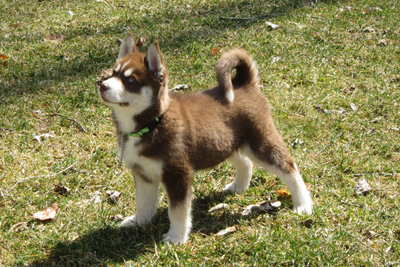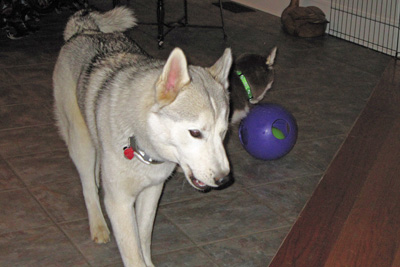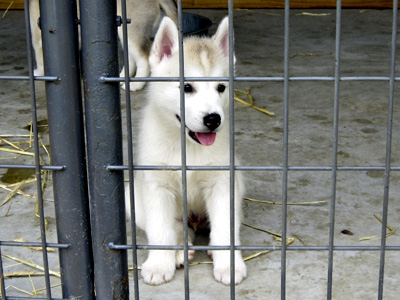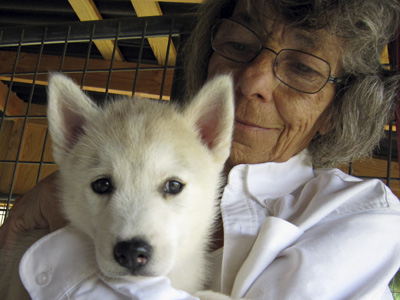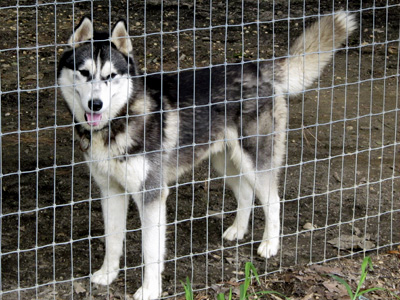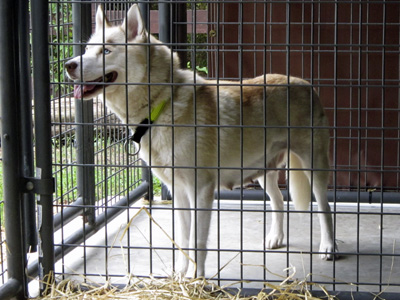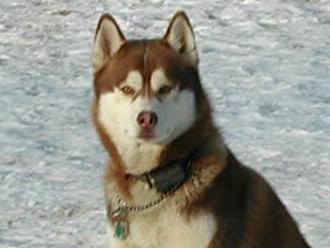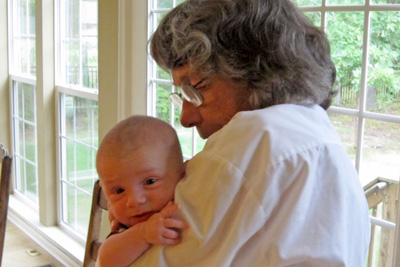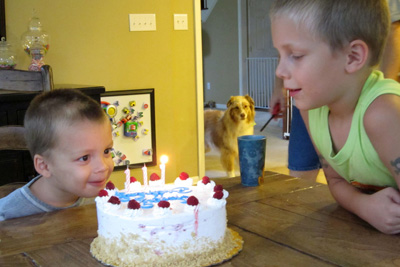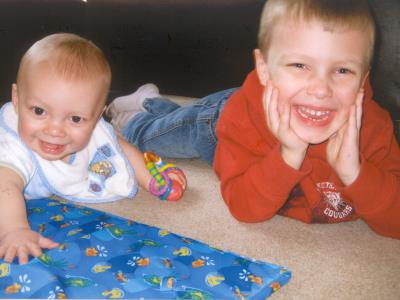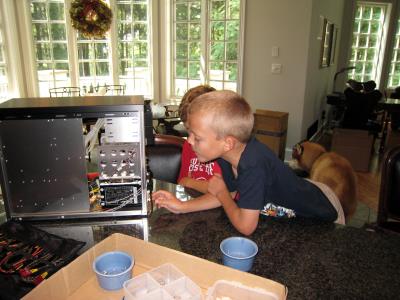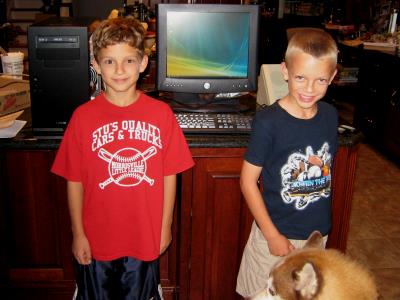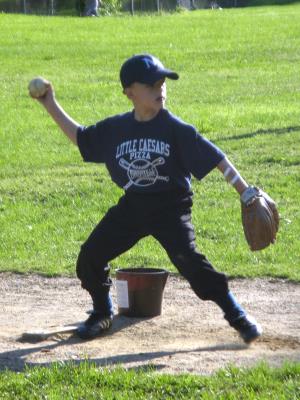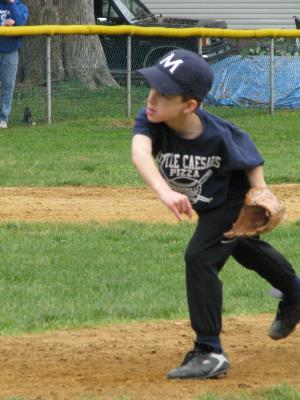Orion
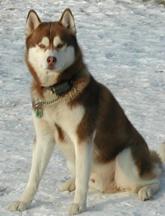 1/25/01
1/25/01 |
Friends!?!

1/25/01 |
Storm
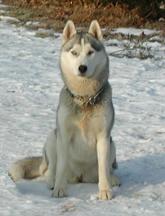
1/25/01 |
|
Orion (5/16/98)
is obviously a "red" Siberian Husky. He is the fourth
generation of our line, and shows his father's (Hooper) good looks combined with his mother's
(Kodi) loving disposition. |
Great friends . . . different dogs. Storm
doesn't really like bread crumbs . . . in fact, the only missing
crumbs were spilled as she squeezed out the Dog Door with the
day's prize! Orion, OTOH, was
content to stand guard for her, greatful for the break in the
action. |
Storm (8/28/99)
is a "gray" Siberian Husky with blue eyes, and is very
calm considering she's a Husky puppy. Storm
is a bit more responsive than Orion
(she will come when called) but needs ongoing entertainment. |
Let’s get one thing straight from the start . . . we
are owned by Siberian Huskies!
What will you find here?
Hopefully, we'll make your "Cyberian" Husky experience
just a little bit richer. We'll try to broaden your understanding
of these wonderful animals by sharing what we've felt during
15 years of being part of a "pack". We'll certainly
brag a bit about our "owners", but let's get something
straight from the start. We describe ourselves as "experienced"
. . . not "experts". For example, we neither show nor
race Siberian Huskies. We have carefully bred and raised just
three litters within the four walls of our home to maintain and
ensure the characteristics we have come to love - great looking
Siberian Huskies with even better dispositions. For ourselves
and for a few other people who will cherish these magnificent
animals as much as we do. Which brings us to . . .
Siberian Husky Rescue
If you are considering living with a Siberian Husky or two,
you need to know that far too many Siberian Huskies are in need
of rescue. Why? For different reasons than most other dogs. You
may not have considered "rescuing" an abandoned dog
before, perhaps for the same reasons you might avoid buying a
used car, i.e., you don't want someone else's problem. Right?
Well, as far as Siberian Huskies are concerned, you would be
wrong.
Siberians often find themselves abandoned for being exactly
what they are supposed to be. The problem is their
human(s) either didn't read, or didn't believe, or didn't carefully
think about the issues raised in "So . . . You Want a Siberian Husky?".
Please do that, and talk to a responsible human member of a Siberian
Husky pack before considering that decade of intimacy with a
Siberian Husky. And please, consider rescuing one of these wonderful
animals, OK?
The Siberian Husky
If you live with a Siberian . . . or are close friends with
someone who does . . . well, then you may already know a fair
amount about the breed. If not, there are a number of web sites
you can visit to learn more. The Siberian Husky Club of America
(SHCA) is a great place to start. The SHCA home page contains an index of available
topics including an introduction to the breed and a brief history of the breed in America. You
can also visit the American Kennel Club web site and review
the AKC's "Breed Standard" for this member
of the Working Group.
Want to know what the standards mean and what
a Husky should actually look like? Ever wonder
why their eyes are almond-shaped, and how that development (and
others) allows them to thrive in the Arctic? Well, just spend
some time reading "An Analysis of the Standard by Three Breeder
Judges". What colors do they come in? Ann Hernandez
has assembled a wonderful web site called "Colors of the Siberian Husky"
where - among many, many other things - you can browse her quick
reference color guide of the surprisingly broad array of
colors and markings characteristic of the breed.
But perhaps the most important information for the curious
potential owner is contained in "So . . . You Want a Siberian Husky?"
. Please read it carefully, and understand that these descriptions
are extremely accurate! You will see them quoted and paraphrased
on many web sites featuring Siberian Huskies. If you are still
interested in owning Siberian Huskies after reading this, you
should also read Stephen Lee's Siberian Husky FAQ. We'd add only a few thoughts
to expand on Stephen's excellent compilation.
Shedding
While Siberian Huskies may only shed their undercoats
twice a year, many shed significantly all of the
time! And if you are owned by two or more dogs, they never
shed at the same time. In other words, carpets rapidly and regularly
receive a thick coat of woven dog hair, and hard-surfaced floors
quickly come alive with "dust bunny" races powered
by your forced-air heating system. As a result, a good vacuum
cleaner is an essential tool for any Siberian Husky owner!
Containment
Carefully consider the implications of Stephen's suggestions
for fencing. Appearance considerations aside, there simply is
no substitute for the chain link fence! For example, we were
not successful in keeping our dogs contained until we installed
an eight foot chain link fence with 18 inches of it buried in
the ground. Dictated by appearance, our most recent fence is
a 6' "wrought iron style" fence with its aluminum bars
4" apart, installed close to the ground. (Note that this
is not adequate for pups and smaller dogs, but it works for our
dogs. At some point in the future, we may have to line this fence
with some other, chain link-like material, or add an electrifed
fence.) To prevent digging out, we lined the fence perimeter
with pre-cast lattice block pavers, 18"x36"x4"
thick. The "lattice" allows the landscape to grow up
through the concrete blocks, preserving appearance and binding
the pavers firmly to the ground.
Why go through all this trouble? One or more escaped Huskies
will quickly introduce you to the adrenalin-filled experience
called a "Husky Hunt". Once free, many Huskies will
simply put their heads down and break into a trot . . . as if
they were pulling a very light sled with no navigational guidance!
When they finally consider it might be time to do something else,
they can find themselves 5 or 10 miles from home . . . with no
concept of how to return.
Concerned about the possible need to locate one of our "kids"
miles from home, we experimented with tracking collars. Unfortunately,
the collars we tried were not designed to be worn day-in, day-out
by potential escapees -- battery life is measured in weeks, units
with user replacable batteries are not weather-proof, and the
required antennae pose problems. If they are tucked up under
the dogs collar - or taped there - the range of the device is
unaccaptably short (perhaps a few blocks in a suburuban development
environment). If the antennae are left extended, they either
continually pick up debris, bend, snap off . . . or make these
lovely animals look like something that just came through the
Stargate! There is another locating technology on the horizon
- personalized GPS transmitters activated by remote signal -
that appears to have promise, but the initial target markets
for these devices are the elderly and small children. I have
not yet found any suitable for pets to wear.
Prey Instinct
While Huskies will invariably welcome human intruders, small
animals and birds should think twice before entering a space
occupied by Siberian Huskies. Many Huskies - particularly younger
dogs - will catch and kill these animals, quickly and without
remorse. Once the animal stops moving, Huskies will often leave
it alone. But the damage is done, and the repercussions can be
considerable if that small animal happens to be the neighbor's
cat who strayed into the yard to do its own hunting!
You can sample this behavior by throwing a ball or a frisbee
near a Husky. The dog is likely to chase it as long as the ball
is moving. But once it stops, the Husky will almost invariably
lose interest. And if your Husky picks the ball up and returns
it anywhere near you, better have the video camera rolling, because
he's not likely to do that twice!
So why do we love them?
Smart, willful, cannot be trusted off-leash, creative and
athletic escape artists, continuous shedding, crave playmates
. . . why do we love them so much?!? Because they are beautiful,
personable, loving, and - especially when you are owned by multiple
Huskies - highly entertaining! While owning a single Siberian
Husky means you must be part of his daily entertainment
regimen, two or three Siberian Huskies will mostly entertain
themselves, and can put on quite a show!
To learn more about them, you can meet with and talk to a
large group of Siberian Husky owners . . . wait . . . scratch
that . . . you can talk to a large group of humans owned by Siberian
Huskies . . . by joining the Sibernet List.



